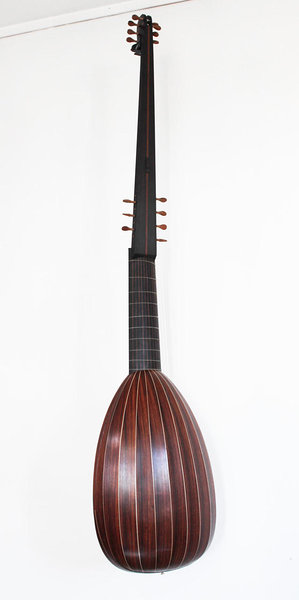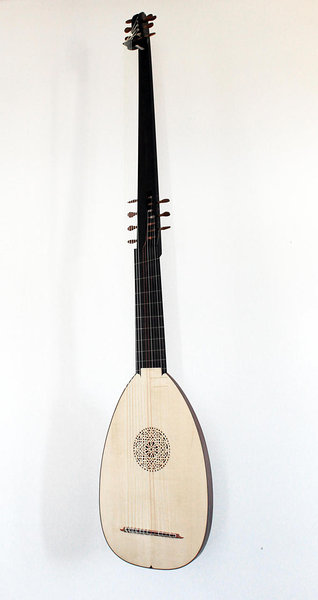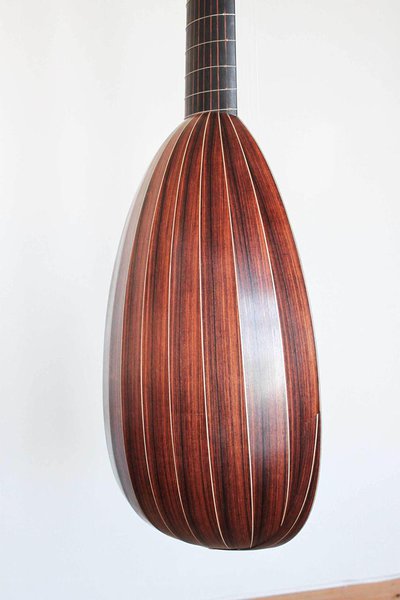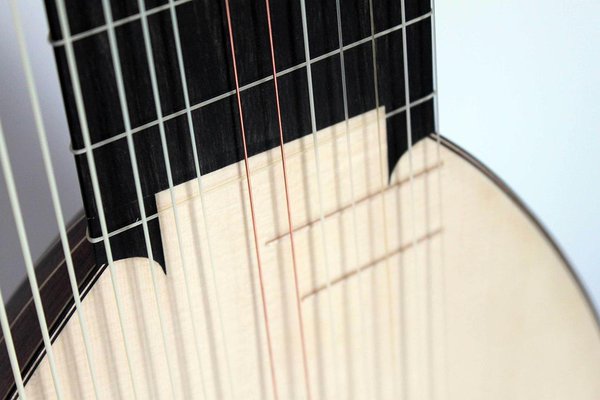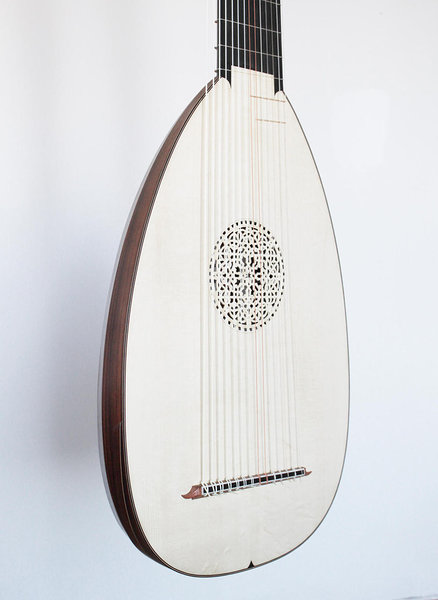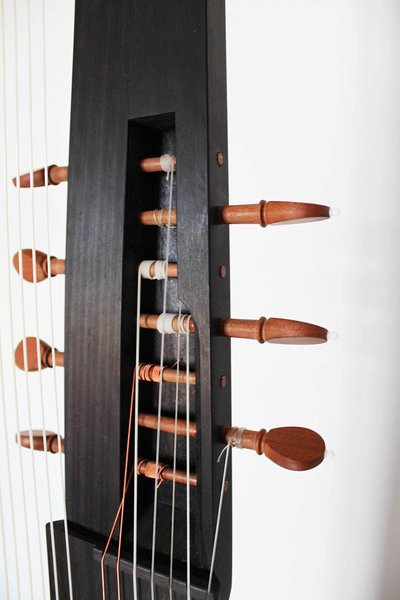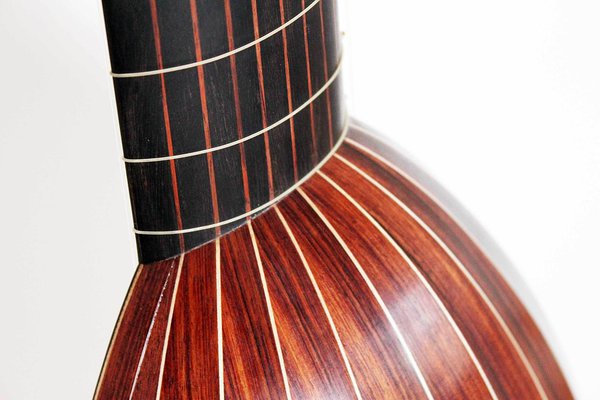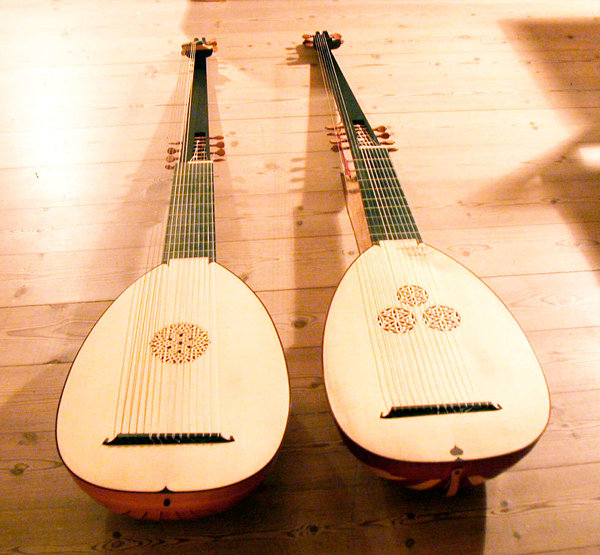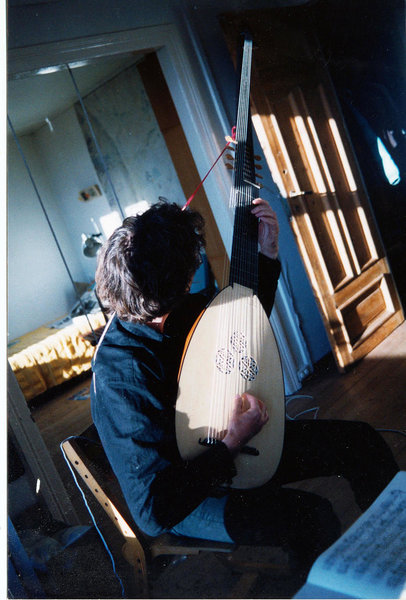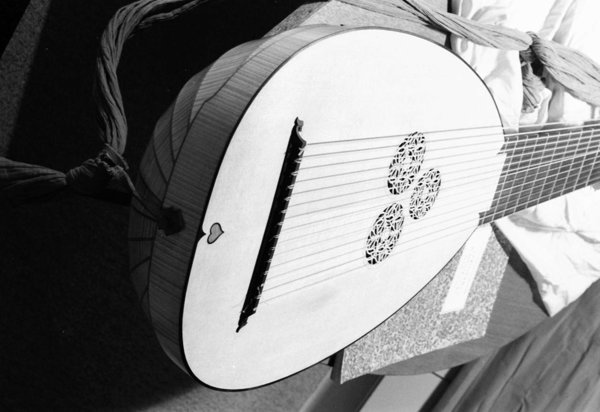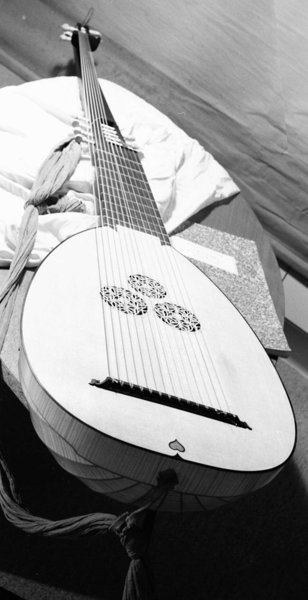Theorbo, Tiorba, Théorbe
Price : see pricelist in menu.
This is my most popular model and is a very loud and full sounding instrument for such a practical size!
I make two versions and the difference is the material for the ribs/corpus and the type of veneer on the
neck extension. The basic version is stained fruitwood like so many old theorbos were done. This version has
a veneer of rosewood, ebony or valnut.
Photo of my last instrument made in nov. 2019 - SOLD-
Based on a body shape by Thomas Edlinger, a lute formerly thought to be
made by Magno Dieffopruchar.
made by Magno Dieffopruchar.
Rotchils inv. no AR 969 (former Wien Kunsthistoriches Museum no: 969)
String length and tuning from Bellerofonte Castaldi
String length and tuning from Bellerofonte Castaldi
SL 77/135 cm tuned in a.
1. and 2. string tuned an octave down
11 ribs choose between yew or 1. and 2. string tuned an octave down
Top: european spruce
Neck: ebony veneer on spruce core.
Neck 2/pegbox: ebony veneer on poplar /cherry core
Pegs: cherry or rosewood
Bridge: plum or pearwood
I have chosen to call this neat instrument "Tiorba" after the instrument played by Bellerofonte Castaldi. *
(not to be confused by the smaller "Tiorbino")
Note: The authenticity of using 7 stopped strings may be argued and is a modern practice. The 7 th may be omitted for historical correctness.
The instrument with SL 76/125 cm is suited for french and italian solo repertoire yet has a good volume and projection for playing in a large hall. It is light,
resonant and has a good weight balance due to thoughtful construction and choice of materials for the neck extension.
Petter Richter, Jarl Stømdahl and Vegard Lund are among the performers that use my theorboes. The Grieg Academy in Bergen
keep one for their students to use.
*) Bellerofonte Castaldi: "Capricci a due stromenti cioe tiorba e tiorbino " . Minkoff Reprint Genéve 1981
Price : see pricelist in menu.
Photo of some instruments I have made of this model.
Based on a body shape by Thomas Edlinger, a lute formerly thought to be
made by Magno Dieffopruchar.
made by Magno Dieffopruchar.
Rotchils inv. no AR 969 (former Wien Kunsthistoriches Museum no: 969)
String length and tuning from Bellerofonte Castaldi
String length and tuning from Bellerofonte Castaldi
SL 77/135 cm tuned in a.
1. and 2. string tuned an octave down
11 ribs choose between maple, walnut or cherry 1. and 2. string tuned an octave down
Top: european spruce
Neck: ebony veneer on spruce core.
Neck 2/pegbox: stained sycamore on poplar core
Pegs: cherry
Bridge: plum, bichh or pearwood
I have chosen to call this neat instrument "Tiorba" after the instrument played by Bellerofonte Castaldi. *
(not to be confused by the smaller "Tiorbino")
This is my most popular model and is made in various materials for the ribs through the years.
Note: The authenticity of using 7 stopped strings may be argued and is a modern practice. The 7 th may be omitted for historical correctness.
The instrument with SL 77/135 cm is suited for french and italian solo repertoire yet has a good volume and projection for playing in a large hall. It is light,
resonant and has a good weight balance due to thoughtful construction and choice of materials for the neck extension.
Petter Richter, Jarl Stømdahl and Vegard Lund are among the performers that use my theorboes. The Grieg Academy in Bergen
keep one for their students to use.
*) Bellerofonte Castaldi: "Capricci a due stromenti cioe tiorba e tiorbino " . Minkoff Reprint Genéve 1981
About the size and type of instrument.
" Since constant changes take place in these various matters, nothing very definite may be stated about them here".
Praetorius (1619), considering the theorbo.It has always been difficult to define the differences between theorbo, chitarrone and archlute. At Pretorius` time it was constantly changing as quoted above, even Mersenne (1637) was confused!
Without going in detail here discussing different geographical practices in Italy, England , Germany and France , these matters have in recent history boiled down to a question of two instruments, one for solo repertoire and one bigger for continuo work. As a practical solution one may even be tempted to think one size fits all, but choosing a small instrument, one deviate from the aesthetic reason behind supporting the tenor voice with a large sonorous bass string instrument with subtle qualities. We know that historically correct performance practice challenge this assumption and I will gladly serve your needs building a variety of models such as the large Buchenberg chitarrone.
